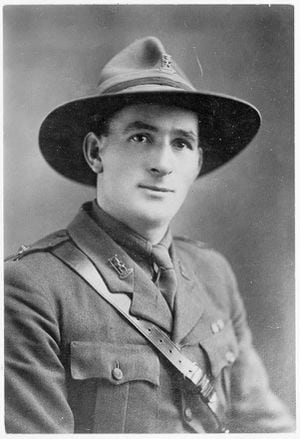Centenary of famous WW1 battle marked
At 3.10am today, the exact time to the minute 100 years ago that arguably the greatest Allied victory of the First World War was launched, a delegation from Staffordshire and the Black Country paid tribute to the men who took part in the offensive.

The Battle of Messines, which attacked a strategically important nine-mile ridge along the Western Front in Belgium, raged for a week. But the scene was set in those opening minutes when 19 mines were exploded under enemy lines, killing 10,000 Germans.
Among the heroes of the assault were men who has been trained on Cannock Chase where an extensive model of the town and terrain was re-discovered and excavated in 2013.
Local historians Richard Pursehouse, 54, and Lee Dent, 51, of the Chase Project which made the extraordinary discovery, were at today's commemorative ceremony at the invitation of the New Zealand authorities whose elite troops led the attack at Messines.
The pair filmed the dawn rising at 3.10am from the base of the ridge looking up to the New Zealand memorial from the position the New Zealand Rifle Brigade when the mines would have been exploding 100 years earlier.
They will follow the route of Lance Corporal Sam Frickleton of the NZRB's 3rd battalion who was awarded the Victoria Cross for his bravery on that day.
Along with David Dunham and Shaun Caddick , also members of the Chase Project, they placed wreaths on behalf of the Wolverhampton branch of the Western Front Association in memory of two soldiers of the Anzac Corps - Thomas Jackson from Cannock and Allan Green of Weeping Cross, Stafford - who were killed in the battle.
They will also pay tribute to Coseley-born Thomas Barratt who, though not part of that assault, was awarded the Victoria Cross for his successful attacks on German snipers at nearby Ypres before he was killed by a shell on July 27, 1917.
As well as the slaughter of 10,000 Germans, more than 7,200 were captured. However, in the initial aftermath of the blasts, the enemy rallied and began to organise themselves. Already wounded, Frickleton and his section recklessly pressed home the attack with grenades and bayonets, or shot any survivors.
One report claimed the attack Frickleton led resulted in two German machine guns being captured, a further two being put out of action, 12 Germans killed and several prisoners taken.
Mr Pursehouse, of Cannock, said: "We feel highly honoured to have been invited by the New Zealand High Commission to attend today's ceremony which highlighted the brave actions of the Chase-trained New Zealanders. It was a proud moment, and an emotional one."
The Messines battle, which greatly boosted morale among the Allies, signified the first time on the Western Front that defensive casualties actually exceeded attacking losses: 25,000 against 17,000.
The Messines model at Cannock, which has since been covered, is thought to be the only surviving example of a Great War terrain model.





